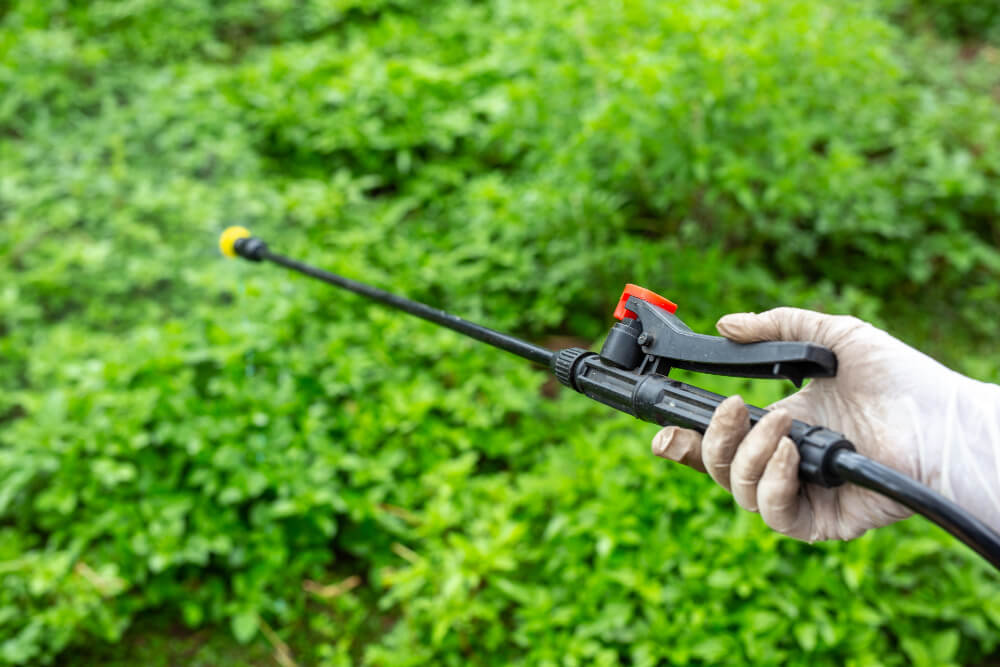As an experienced landscaper and the owner of a small business that deals with lawn maintenance, I know the hard work and dedication it takes to cultivate and sustain a gorgeous lawn. You have to fertilize it, water it, mow it, trim it, and then… well, you have to maintain constant vigilance anytime the lawn isn’t covered in snow or frozen solid.
Why, you might ask? A beautiful, lush yard full of healthy grass can attract unwanted larval and insect visitors—much more so than a dead or poorly cared-for lawn might. These tiny pests can damage your grass, leaving unsightly patches and weakening your yard’s overall condition. Should such an infestation occur, identifying and managing these pests as soon as possible is essential to preserving the health and vitality of your lawn. In this blog post, I’ll outline five of the most common lawn pests and offer a few effective strategies for dealing with each of them.
Grubs
Grubs are the larvae of beetles, such as Japanese beetles or June bugs. They live underground and feed on grass roots, causing brown patches and spongy turf.
Signs of Infestation:
- Irregular brown patches
- Increased activity from birds, skunks, or raccoons digging for grubs
- Grass that lifts easily from the soil
How to Deal with Grubs:
- Chemical Treatments: Apply a grub control pesticide in early summer or fall when grubs are most active.
- Natural Methods: Introduce beneficial nematodes or milky spore disease to your lawn. These natural predators target grubs without harming other wildlife.
Chinch Bugs
Chinch bugs are tiny insects that feed on grass by sucking out its juices, leaving yellow or brown patches in their wake.
Signs of Infestation:
- Yellowing grass that turns brown and dies
- Patches of dead grass that grow larger over time
- Presence of small, fast-moving bugs on the soil surface
How to Deal with Chinch Bugs:
- Chemical Treatments: Use insecticides labeled for chinch bugs. Apply according to the manufacturer’s instructions.
- Cultural Methods: Keep your lawn well-watered and mow at the recommended height to reduce chinch bug habitat.
Sod Webworms
Sod webworms are the larvae of lawn moths. They create silk-lined tunnels in the thatch layer and feed on grass blades at night.
Signs of Infestation:
- Irregular brown patches
- Small green pellets (worm droppings) on the soil surface
- Moth activity in the evening
How to Deal with Sod Webworms:
- Chemical Treatments: Apply an appropriate insecticide in late afternoon or early evening when webworms are active.
- Natural Methods: Encourage birds to visit your lawn, as they can help control webworm populations.
Armyworms
Armyworms are the caterpillars of moths. They can devastate a lawn by eating grass blades down to the ground.
Signs of Infestation:
- Grass blades with chewed tips
- Brown patches that appear overnight
- Presence of caterpillars in the early morning or late afternoon
How to Deal with Armyworms:
- Chemical Treatments: Apply an insecticide specifically designed for armyworms.
- Cultural Methods: Maintain a healthy lawn by watering and fertilizing appropriately, which can make your grass more resilient to armyworms.
Mole Crickets
Mole crickets are burrowing insects that damage grass by feeding on roots and creating tunnels.
Signs of Infestation:
- Raised tunnels and mounds of soil
- Thinning grass and bare patches
- Soft, spongy ground
How to Deal with Mole Crickets:
- Chemical Treatments: Use a mole cricket bait or insecticide in late spring or early summer.
- Cultural Methods: Encourage natural predators like birds and beneficial nematodes to help control mole cricket populations.
By staying vigilant and using a combination of chemical treatments, cultural methods, and natural methods, you can protect your lawn from these five common pests and keep it looking its best all year round. Remember, a well-maintained lawn not only enhances your home’s curb appeal and property value but also provides the perfect environment for relaxing outdoors with family, friends, and pets.
